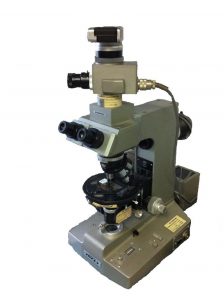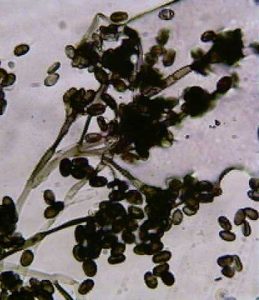

Molds are fungi which grow in strand- or tube-like, genitally identical cell clusters called hyphae. These hyphae come together to form a mycelial mass (also known as a mycelium), which forms the “mold colony” as seen with the naked eye. Because all of the nuclei in this colony are genetically the same, it can be considered a single organism.
Hardy and diverse, molds are found everywhere. We even eat them, many times on purpose (Penicillium Roqueforti in blue cheese), but other times not (Rhizopus stolonifer on old bread). Molds can thrive outdoors as well as indoors, and nothing short of living in a sterile bubble could eliminate our exposure to them.
Although they can cause allergic reactions in some people, in nature they are hardly ever dangerous. They become a problem when their spores (microscopic “seeds” which molds release into the air as their means of reproduction) become too concentrated, usually in an enclosed, indoor area. People breathing high concentrations of mold spores can experience any number of health problems (respiratory and beyond) depending on factors such as their age, health, susceptibility, length of exposure, smoking history, what medications they’re taking, the type of mold spore in the air (some, such as Stachybotrys chartarum, are far more toxic than others), and so on.
Lyle Labs is familiar with all aspects of mold testing and remediation, and we look beyond the mold itself to the underlying water problem.

Stachybotrys: This organism is sometimes referred to as a "toxic black mold"

COPYRIGHT © 2024 LYLE ENVIRONMENTAL. ALL RIGHTS RESERVED. | (614) 488-1022 | 1507 CHAMBERS ROAD / COLUMBUS, OH 43212